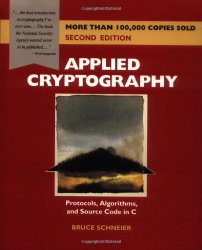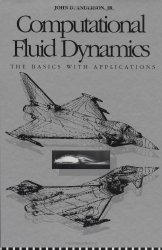 Computational Fluid Dynamics
Computational Fluid Dynamicsby John Anderson
Publisher: McGraw-Hill Science/Engineering/Math
ISBN: 0070016852
The Beginner's guide to Computational Fluid Dynamics. From aerospace design to applications in civil, mechanical, and chemical engineering, computational fluid dynamics (CFD) is as essential as it is complex.
The most accessible introduction of its kind, Computational Fluid Dynamics: The Basics With Applications, by experienced aerospace engineer John D. Anderson, Jr., gives you a thorough grounding in the governing equations of fluid dynamics - their derivation, physical meaning, and most relevant forms; numerical discretization of the governing equations
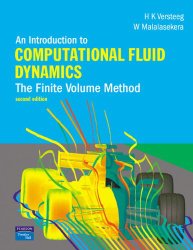 An Introduction to Computational Fluid Dynamics: The Finite Volume Method
An Introduction to Computational Fluid Dynamics: The Finite Volume Methodby H. K. Versteeg, W. Malalasekera
Publisher: Prentice Hall
ISBN: 0131274988
The use of Computational Fluid Dynamics to simulate and predict fluid flows, heat transfer and associated phenomena continues to grow throughout many engineering disciplines. On the back of ever more powerful computers and graphical user interfaces CFD provides engineers with a reliable tool to assist in the design of industrial equipment often reducing or eliminating the need for performing trial-and-error experimentation.
An Introduction to Computational Fluid Dynamics is the ideal text for the newcomer to the area whether they be undergraduates, graduates, or professionals. It provides thorough yet accessible coverage of commercial finite volume based CFD codes within the context of the underlying theory, giving the reader a full appreciation of CFD and its numerous engineering applications.
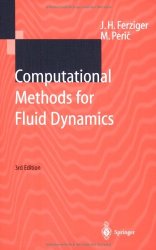 Computational Methods for Fluid Dynamics
Computational Methods for Fluid Dynamicsby Joel H. Ferziger, Milovan Peric
Publisher: Springer Verlag
ISBN: 3540420746
In its third revised and extended edition the book offers an overview of the techniques used to solve problems in fluid mechanics on computers. The authors describe in detail the most often used techniques. Included are advanced techniques in computational fluid dynamics, such as direct and large-eddy simulation of turbulence.
This book provides an overview of the advanced techniques used to solve problems in fluid mechanics on computers and describes in detail those most often used in practice. The book shows common roots and basic principles for many apparently different methods. Furthermore, the issues of numerical accuracy, estimation, and reduction of numerical errors are dealt with in detail, with many examples. 95 illus.
 Essential Computational Fluid Dynamics
Essential Computational Fluid Dynamicsby Oleg Zikanov
Publisher: Wiley
ISBN: 0470423293
As modern advancements continue to generate growth in computer power, and as new, more accurate and effective numerical techniques are developed, computational fluid dynamics is emerging as a primary method for analyzing fluid flows and heat transfer.
CFD is used in many areas, such as astrophysics, weather prediction, and biomedical research, but mainly in engineering, where it has become an everyday tool of design and optimization. Essential Computational Fluid Dynamics shows why it is imperative for newcomers in this field as well as for experienced engineers to understand the basics of CFD analysis in order to apply available CFD software correctly and efficiently.
 Computational Fluid Dynamics: Principles and Applications
Computational Fluid Dynamics: Principles and Applicationsby Jiri Blazek
Publisher: Elsevier Science
ISBN: 0080445063
Computational Fluid Dynamics (CFD) is an important design tool in engineering and also a substantial research tool in various physical sciences as well as in biology.
The objective of this book is to provide university students with a solid foundation for understanding the numerical methods employed in today's CFD and to familiarise them with modern CFD codes by hands-on experience. It is also intended for engineers and scientists starting to work in the field of CFD or for those who apply CFD codes. Due to the detailed index, the text can serve as a reference handbook too.
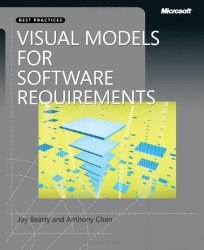 Visual Models for Software Requirements
Visual Models for Software Requirements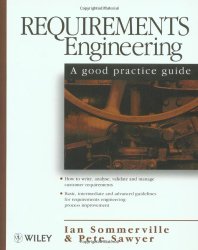 Requirements Engineering: A Good Practice Guide
Requirements Engineering: A Good Practice Guide Design Patterns: Elements of Reusable Object-Oriented Software
Design Patterns: Elements of Reusable Object-Oriented Software Software Testing and Quality Assurance: Theory and Practice
Software Testing and Quality Assurance: Theory and Practice Mastering Software Quality Assurance: Best Practices, Tools and Techniques for Software Developers
Mastering Software Quality Assurance: Best Practices, Tools and Techniques for Software Developers